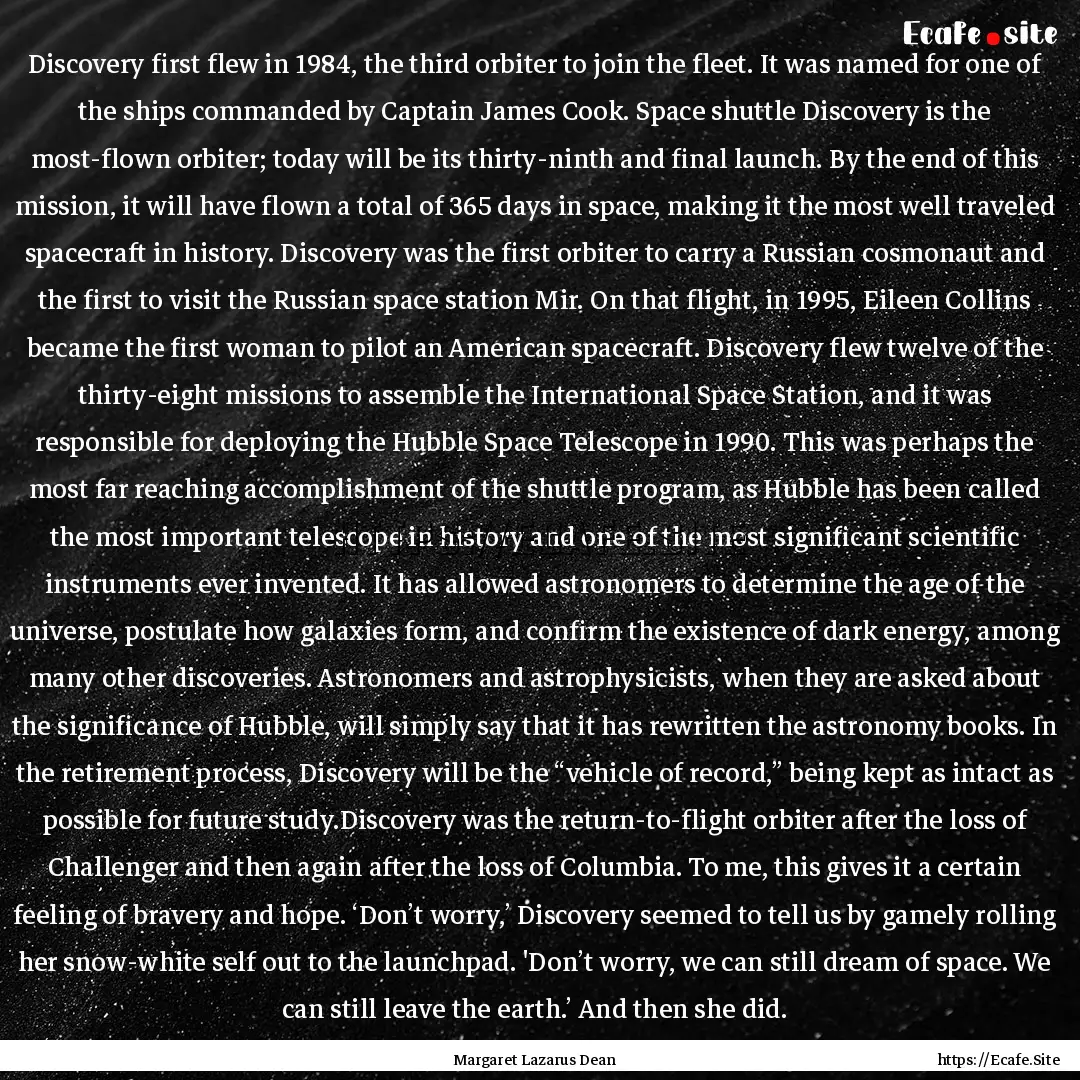
Report, if you have a problem with this page“ Discovery first flew in 1984, the third orbiter to join the fleet. It was named for one of the ships commanded by Captain James Cook. Space shuttle Discovery is the most-flown orbiter; today will be its thirty-ninth and final launch. By the end of this mission, it will have flown a total of 365 days in space, making it the most well traveled spacecraft in history. Discovery was the first orbiter to carry a Russian cosmonaut and the first to visit the Russian space station Mir. On that flight, in 1995, Eileen Collins became the first woman to pilot an American spacecraft. Discovery flew twelve of the thirty-eight missions to assemble the International Space Station, and it was responsible for deploying the Hubble Space Telescope in 1990. This was perhaps the most far reaching accomplishment of the shuttle program, as Hubble has been called the most important telescope in history and one of the most significant scientific instruments ever invented. It has allowed astronomers to determine the age of the universe, postulate how galaxies form, and confirm the existence of dark energy, among many other discoveries. Astronomers and astrophysicists, when they are asked about the significance of Hubble, will simply say that it has rewritten the astronomy books. In the retirement process, Discovery will be the “vehicle of record,” being kept as intact as possible for future study.Discovery was the return-to-flight orbiter after the loss of Challenger and then again after the loss of Columbia. To me, this gives it a certain feeling of bravery and hope. ‘Don’t worry,’ Discovery seemed to tell us by gamely rolling her snow-white self out to the launchpad. 'Don’t worry, we can still dream of space. We can still leave the earth.’ And then she did. ”

Margaret Lazarus Dean
From : Leaving Orbit: Notes from the Last Days of American Spaceflight



